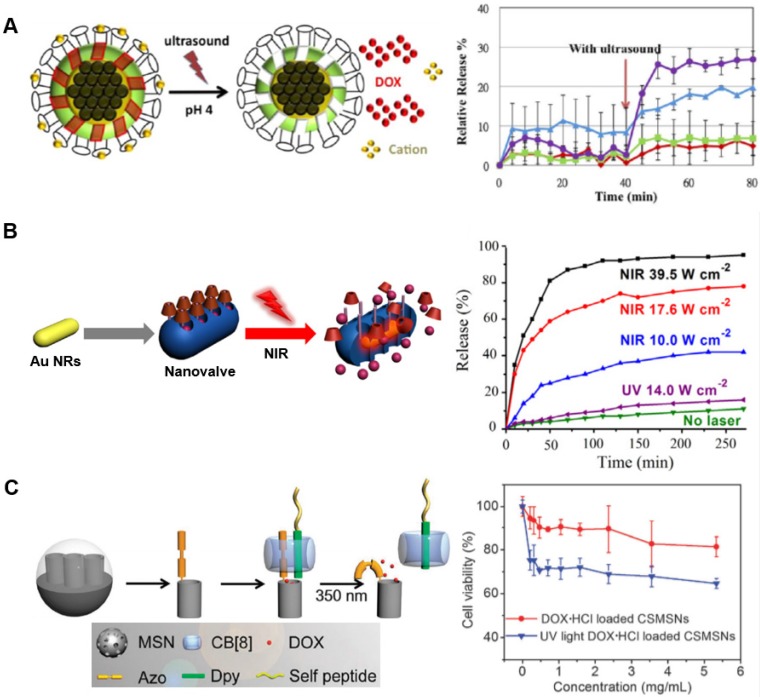Figure 4.
Examples of drug release by externally applied stimuli. (A) Iron oxide core nanoparticles were coated with mesoporous silica and capped with cations bound to surface-functionalized crown ether macrocycles. Encapsulated drugs were released when the host-guest system was disrupted by ultrasonic waves. Adapted with permission from reference 35. Copyright 2013 American Chemical Society. (B) Gold nanorods were coated with mesoporous silica and capped with calix[4]arene host-guest assemblies. With increasing intensities of NIR light, the rate of drug release could be controlled. Figure used with permission from reference 85. Copyright 2015 Elsevier. (C) Mesoporous silica nanoparticles were surface-functionalized with azobenzene moieties, which allowed for ternary complex formation with cucurbit[8]uril and a peptide-conjugated dipyridyl. UV light induced conformational change in the azobenzene, releasing encapsulated drug. Adapted with permission from reference 89. Copyright 2015 Royal Society of Chemistry.

